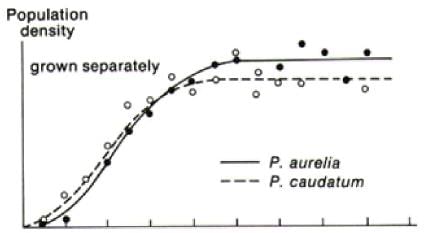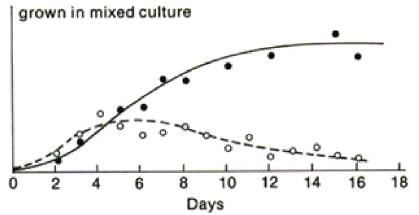Ecology MCQ - IIT JAM MCQ
21 Questions MCQ Test - Ecology MCQ
Two sympatric species congregate on fruit of two closely related species of trees for mating. If someone ask from you that what can be the most important cue used by these fly species to locate their mates from the long distance in the forest?
The fact that shore crabs feed on intermediate sized mussels and not large sized mussels that will provide them more energy is because:
| 1 Crore+ students have signed up on EduRev. Have you? Download the App |
Which of the following best explains why predators and their prey have similar population cycles?
Which plant species is more likely to experience allee effects, under low population size conditions?
Which of the following are correct statements about light in aquatic environments?
I. Water selectively reflects and absorbs certain wavelengths of light.
II. Photosynthetic organisms that live in deep water probably utilize red light.
III. Light intensity is an important abiotic factor in limiting the distribution of photosynthetic organisms.
Which of the following characteristics is a population defined by?
P) Individuals belong to the same species
Q) Individuals inhabit the same area
R) Individuals have larger birth rates than death rates
An ecologist recorded a population of 15 squirrels per square kilometer in one forest and another containing 25 squirrels per square kilometer in another forest. The ecologist was comparing
Which of the following do the examples below represent?
Eg 1 : Belding’s squirrel gives alarm calls at the expense of the predator attacking it.
Eg 2 : Lionesses with cubs allow all cubs in the pride to nurse, including those of other females.
These examples represent
Which of the following would be a limiting factor which affects the panda population of China?
During which of the following cases would an animal not behave territorially?
Which of the following are not density-independent factors affecting populations?
In a population of ants, the per capita birth and death rates are 0.04 and 0.02 respectively. If there are 1000 ants in a population, the number of ants added or lost from the population at the end of one year will be __________ [Answer in integer]
A population is growing logistically with a growth rate of 0.15 /week. The maximum growth rate of this population, if carrying capacity of the environment is 400 individuals will be ____________
[Answer upto one decimal place]
In a population of insects, the number of individuals increase from 50 to 56 in a month. If the birth rate during this period is 0.5, the death rate in the population will be _________
[Answer upto two decimal places]
Fox in Alaska were captured and marked. The first capture resulted in 247 being caught. The second sample caught 173 and 98 had been marked. The estimated population will be ____________
[Answer upto two decimal places]



















